Smoked Prime Rib
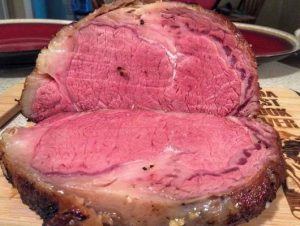
At CWEB, we are always looking to expand our network of strategic investors and partners. If you're interested in exploring investment opportunities or discussing potential partnerships and serious inquiries. Contact: jacque@cweb.com

Vegan Chai Tea Lattes, ready in under 15 minutes!
A breakfast treat with eggs and bacon, prepared in a waffle maker.
A quesadilla is a Mexican dish and type of taco, consisting of a tortilla that is filled primarily with cheese, and sometimes meats, beans, and spices, and then cooked on a griddle. Traditionally, a corn tortilla is used, but it can also be made with a flour tortilla, particularly in northern Mexico and the United
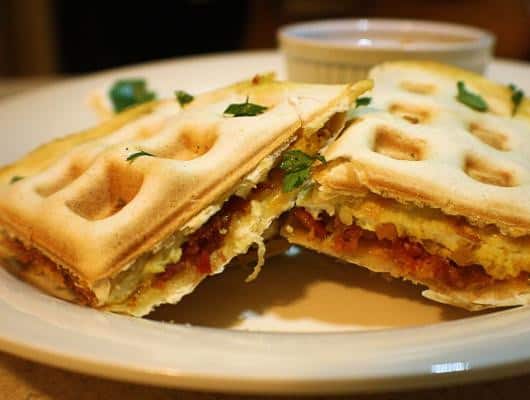
2 small flour tortillas2 eggs1/4 cup of onion1/3 cup of sharp cheddar cheese2 strips of bacon, cooked crispyCilantro, for garnish
2. Whisk your eggs and fry them in a pan like an omelet. Keep it flat like a pancake. It will fit well in your tortillas.
3. Place one tortilla on a Belgium round waffle maker and place fried eggs, onions, cheese, and bacon. Place other tortilla on top. Close your waffle maker and cook until cheese is thoroughly melted, which is about 5 to 7 minutes.
4. Remove and cut in quarters. Garnish with cilantro and serve with salsa and plain Greek yogurt ( or sour cream) and enjoy!
Credit Foodista Chris Hunnicutt
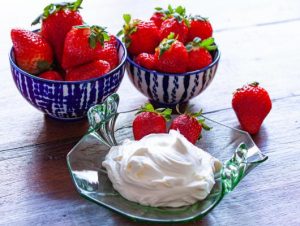

Adapted from The Pie and Pastry Bible by Rose Levy Beranbaum.
The Crust
The Base Layer
The Cooked Layer
The Fresh Layer
The Crust
Put 1/3 of the butter into the freezer in a medium-sized mixing bowl.
Whisk the flour and salt together. Mix in 2/3 of the butter with a pastry cutter until it looks like course meal. Once the butter is mixed with the flour, minimize exposure of the dough to your warm, warm hands, or you will melt the butter.
Place the butter/salt/flour mixture into a gallon-sized zip-top bag. Add in the last 1/3 of the butter and put the bowl back into the freezer. Get rid of all the air you can and seal the bag. Take your trustiest rolling pin and roll the contents of the bag until the butter turns into flatten flakes. Place the bag into the freezer for 10 minutes or thereabouts. The goal is to reverse any melting from the butter and make it reasonably solid again.
Take out the bag and the bowl, and transfer all of the dough to the bowl. You will need to scrape the sides of the bag, as the butter will have stuck to it during the rolling. Sprinkle the heavy cream into the mixture and mix. I use a silicone spatula to mix, as it won’t melt the butter and it’ll resist some of the sticking.
Put the mixture back into the bag and seal, removing most of the air as before. Knead the dough inside the bag with your fingertips until it sticks together. When you pull it, it should stretch a bit.
Divide the dough into two 6″ discs and refrigerate for anywhere from 1 to 24 hours. 8 hours is ideal. Although you’ll only need one of these discs for this pie, as it was a competition, I baked two in case something went horribly, horribly wrong.
Preheat the oven to 450 ° and let sit at that temperature for another 20-30 minutes.
Roll out the pie dough into a 13″ circle and place into the pie pan. Shape the top as you like. Freeze for at least 20 minutes.
Dock the sides and bottom of the dough. Crumple a piece of parchment paper, unroll it, and place over the pie, fitting it down close to the dough. Put in your dried beans, rice, or pie weights. Bake for 20 minutes. Carefully remove the weighted parchment paper, cover the top edge of the crust with aluminum foil, and bake for another 5-10 minutes, until the inside of the crust has a light golden tinge and feels more like crust than dough. Let cool for 3 minutes, then brush on the egg white to the sides and bottom. Let cool completely.
The Bottom Layer
Put the white chocolate into a microwave safe dish and microwave on high for 20 seconds at a time. At the end of each, stir. Repeat until there’s more melted bits than solid bits, then keep stirring until all of the solid bits turn into melted bits. Let cool to room temperature.
In a small mixing bowl, mix the cream cheese with an electric mixer until it’s somewhat fluffy and whipped. Add in the cooled white chocolate and mix. Add in the sour cream and mix until combined. Cover the bottom of the pie with this mixture.
The Cooked Layer
Lightly crush the strawberries with a fork in a small saucepan. Add the sugar, water, salt, lemon juice, and cornstarch. Bring to a boil. Simmer for 1 minute. Pour into a bowl and let cool to room temperature. Stir occasionally during the cooling process. Once cooled, pour over the bottom later of the pie.
The Fresh Layer
Your strawberries should have the tops cut off so that they could stand up on the a flat surface. Place these point side up on top of the pie.
In the small saucepan which has been washed and dried, melt the currant jelly until it is melted. It will bubble. Strain into a glass, which will involve a lot of pressing with a spatula. Stir in the St. Germain. Brush this mixture onto the fresh strawberries.
The Pie
Cool in a refrigerator for an hour or two or overnight. Slice and eat, or slice and serve to judges. If the latter, try to save yourself a slice.

Chorizo, egg, potato and avocado breakfast burritos with ranchero cheese and salsa verde.
Low-fat versions of the breakfast burrito often contain scrambled egg whites rather than whole eggs. Lower-fat cheeses as well as a variety of vegetables can further reduce fat and calories in the burritos. Sour cream or low-fat yogurt is often served with all types of burritos.
Ingredients
6 large eggs
10 ozs. Mexican chorizo spicy pork sausage
1 large white potato
1 medium white onion
1 small bunch spring onions
6 ounces ranchero cheese queso ranchero
2 medium avocados
4 large or 6 medium flour tortillas
Preparation
1 Prep the Chorizo
2 Cut the chorizo in half.
3 Remove the casing with your fingers and discard.
4 Break the chorizo into chunks and set aside.
5 Cooking the Burrito Filling
6 Chop the onions and potatoes into 1/4″ pieces. Over medium heat, cook the onions in 1 tsp. oil for 1 minute.
7 Add the potatoes and cook for 10 to 12 minutes until the potatoes start to brown.
8 Add the chorizo and cook for 12 minutes until the chorizo has given up most of it fat.
9 Beat the eggs with 1/2 tsp.. salt and pour them into the pan with the chorizo, potato and onion.
10 Let the eggs set for one minute. Then turn. Cook until the eggs have just set and break up the eggs with your spatula. Cook for couple more minutes until all of the egg has cooked through.
11 Rolling the Burrito
12 Cut the avocado into 1/4” pieces. Slice the spring onion into very thin rings including the 2” of the green stem.
13 Heat the tortillas in a dry pan until they start to puff up and become pliable. Heat them for about 30 seconds per side. Don’t let the tortilla become crispy which makes it difficult to roll.
14 On the warm tortillas, place the chorizo and eggs, then add about 1 oz. of crumbled cheese, a couple of tbsps. of diced avocado and 2 tbsps. of salsa.
15 Fold the bottom of the tortilla up about 1″ then fold the sides of the tortilla in about 1”.
16 Roll the burrito tightly tucking the sides of the tortilla in as you go. It should form a tight cylinder with even ends.
Source Foodista Mexican Food Journal
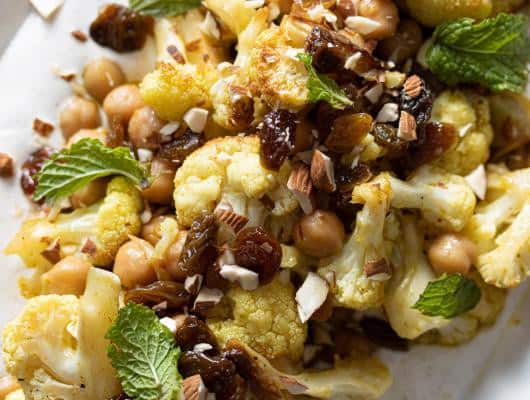
Reading the recipes it may feel as they are so many steps. Do not get concerned about all of them, they are quite simple to follow and easy to prepare. More for your convenience.
I used canned chickpeas however, you can use dried and soak them for 6 hours or overnight in the refrigerator. Uncovered bring to a boil over medium-high heat, reduce the heat and simmer, stirring occasionally until the beans are tender, around 2 hours. Proceed with the recipe for all the other steps.
A rich, healthy, and delicious dish that will work well by itself, or alongside fish, chicken, or lamb. The yogurt binds every flavor as well as enhances them giving the vegetables a great flavor.
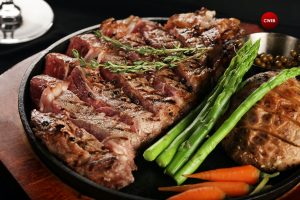
There are challenges with any style of cooking. The challenges of regular cooking, the pots-and-pans, pour-and-stir style of cooking, is mostly one of “volume of material.” There are so many methods, so many different ingredients, and such obscure terminology, that it’s difficult to get going. Trickier is leaning how to combine ingredients in a way that tastes good, and getting interesting combinations of textures and flavors, that it’s just a matter of getting through the material and remembering it, at least to reach a certain level.
Baking is a bit different. Baking has a lot more required knowledge of chemistry and biology in order to get things working at all. There are magical proportions of ingredients, certain order of adding things. If that were all, it wouldn’t be so bad, but because there are so many factors that have to be just right in order to work, and there’s enough variation in materials available to the home cook, that you can’t usually rely just upon the numbers; instead, you have to get a feel for when things are working and when they aren’t, so you can make adjustments to a recipe if, for example, your flour doesn’t have as high a protein-content as it did the last time you bought it.
And then there’s grilling. Grilling is, in many ways, the simplest of the three styles of cooking. It’s basically a single style of heat application, or maybe two styles, depending on how fancy you’re getting. However, as with anything simple, this means that there are fewer steps to get wrong, so if you do mess something up, it’ll be more noticeable. Add to that what would appear to be an impenetrable black box of whatever it is that you’re cooking, and you have what seems like some sort of voodoo.
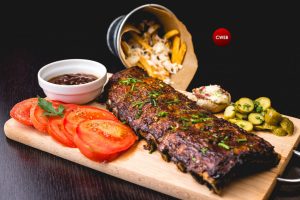
It doesn’t help that much of the grilling knowledge is passed down, father-to-son, in family bonding rituals. The side effect of this is that, if there were something that the dad didn’t know, it’s likely that he wouldn’t ask anyone else, or look it up, he’d just make something up that sounded good and pass that information along to the next generation. Not a good scenario.
Fortunately, I’m here to help, with what will hopefully be simple and useful tips on grilling techniques. First, consider that the primary method of grilling involves high amounts of radiant heat hitting the item being grilled. Your hamburgers, your steaks, your rotisserie chickens, these are all applications involving that radiant heat. The secondary method is a lower energy heat, some radiant, some convection. If you close the lid, the air inside will get very hot, though not as hot as whatever is right over the coals. The tertiary method of cooking is conduction. While the conduction cooks very little of the food percentage-wise, it’s responsible for the ever-important grill marks, which are almost as vital to grilling as a pair of tongs, both in flavor and presentation.
The second thing to consider is how big the critter you’re grilling is. Oh, sure, you could be grilling vegetables or making some sort of crazy coal-fired bread oven, but the trick to grilling is learning to cook meat so that it’s flavorful and juicy. The other applications are interesting, but not the main focus; the meat, if you will. You won’t? Okay, fine: the main focus.
For our grilling purposes, there are two types of meats: thick and thin. Thin meats are your steaks, your hamburgers, your pork chops, and so on. The thick meats are your chuck roasts, your legs of lamb, and the like. The thick meats, in many ways, are relatively simple to cook and know when they’re ready. Generally you’ll cook over indirect heat, with a searing at the beginning or the end, and you’ll use a probe thermometer or an instant-read thermometer to determine their doneness. There are plenty of sources on the internet for the temperature at which any given meat is both safe to eat and tasty, so use those as necessary. Bear in mind that you’ll want to cook it under temperature by 5-10 degrees, then let the meat rest for 10 minutes covered in foil to let the residual heat finish cooking the rest of the way. This gives the meat a chance to reabsorb some of its juices, for a tastier meal.
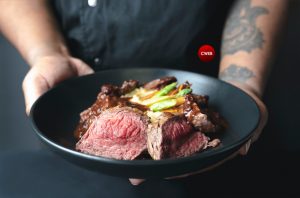
For the thinner meats, this is where the voodoo comes in. To be sure, you can still use a thermometer, but it’s a little trickier to hit the center of a thinner piece of meat, and besides, it’s far less satisfying. No, when grilling properly, you want to learn how to feel when the meat is cooked. At the early stages of your grilling career, that means literally feeling the meat, not making an emotional connection with it. As you increase your skills, well, the sky’s the limit.
Hold out your right hand, as if telling oncoming traffic to stop: fingers splayed in a relaxed manner, palm out. Using your thumb and forefinger of your left hand, feel on either side (front/palm) of your right hand until you locate where the bones meet for the thumb and index finger. The muscle that comes out from that part of your hand inside the angle formed by those two bones, that’s what we’ll call your Steak Zone. I know, it’s very appetizing, but stay with me.
Do you feel how tight the muscle is just away from the bones? That’s a well-done steak, or as steak lovers call it, an over-cooked steak. Don’t let your steak get this firm, for that means failure. Yes, I know, that’s harsh, but there are realities to grilling steaks, and one of those realities is that a well-done steak is not good to eat. Another reality is that steak sauce is not good to eat on a properly done steak either, but we’ll get to that later.
Back to the Steak Zone. Continue out from the over-cooked/well-done section towards the open air. Stop when you’ve reached the part that feels more or less like raw steak, but not as cold or wet (hopefully). That’s your range of feeling. Divide that into 4-6 distinct areas, and you have all you need to know to get started on your path to zen grilling. The closer it feels to the inside muscle, the more done it is. The closer it feels to the outside, the more rare it is. Combine that with lots and lots of practice, and you’ll be a grill master in no time. I know, it hurts, having to cook and eat a series of steaks just to increase your skills, but sacrifices must be made.
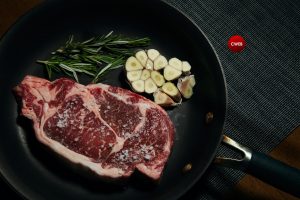
So, back to the steak sauce. A proper cut of meat, properly cooked, needs but salt, pepper, and, if you’re exceptionally decadent, a smidge of butter to reach perfection. If you feel the need to break out the steak sauce, chances are that you’ve just skimped on the salt, because steak sauce is generally pretty heavy with salt. Add some on, and you should be good. Try it out; if it doesn’t work for you, then enjoy your steak sauce, but I think you’ll be surprised by the difference.
Above is about 75% of what you need to know to successfully grill meats of various descriptions. Oh, sure, details will vary, recipes and spices will be thrown in, and we’ve completely avoided talk of what kind of grill to use, but the important thing is that you don’t have to be born to grilling; it can be learned, and you can do it.
Created by The Food Geek Blog
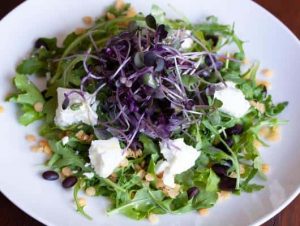
Light, healthy and so easy to prepare. I used crimson lentils because I had them on hand, but black or green de Puy will be fine as well. No salt is used, by choice.
The recipe below is for 2. You can serve it in individual plates or on a large one. Or, of course augment the portions via the serving size tab on the page
A playfulness between light sweet and pungent and brought together by a dash of olive oil.